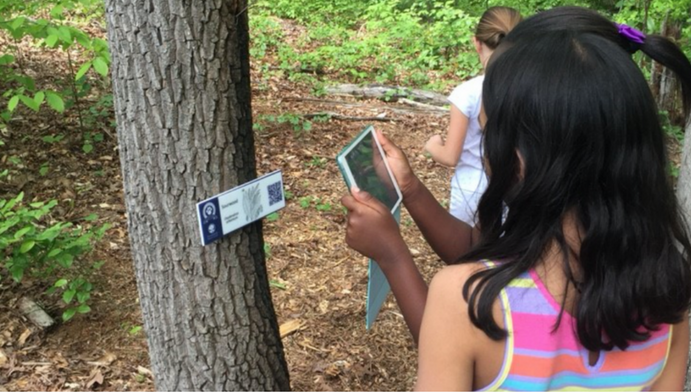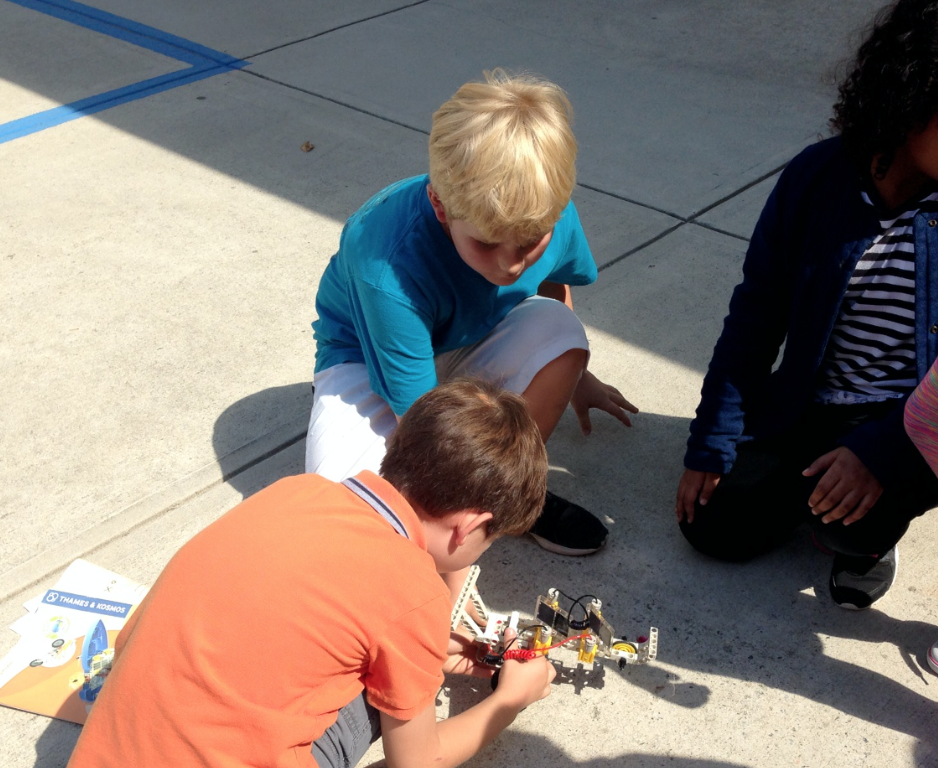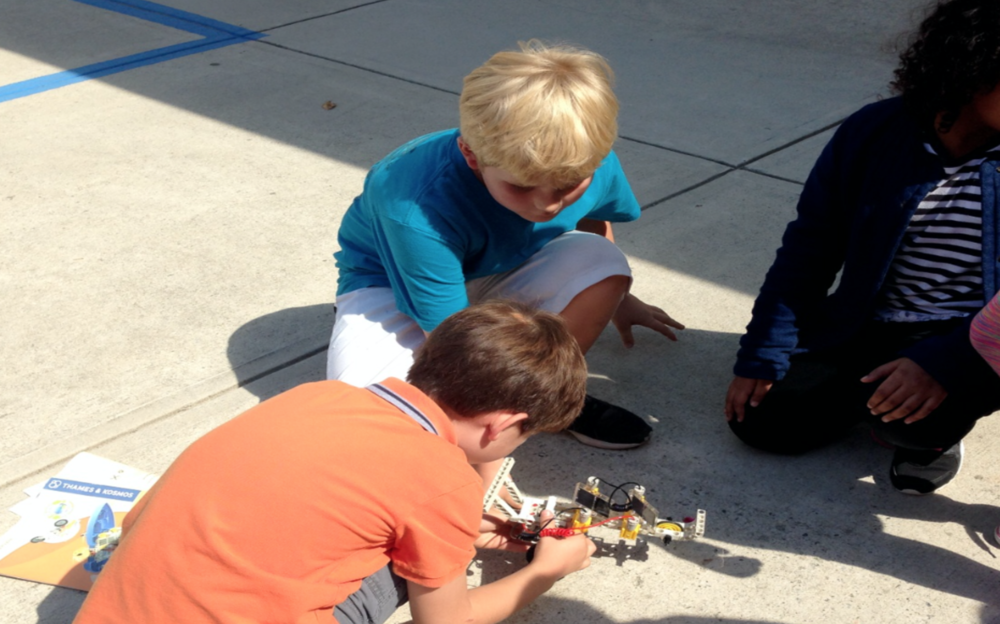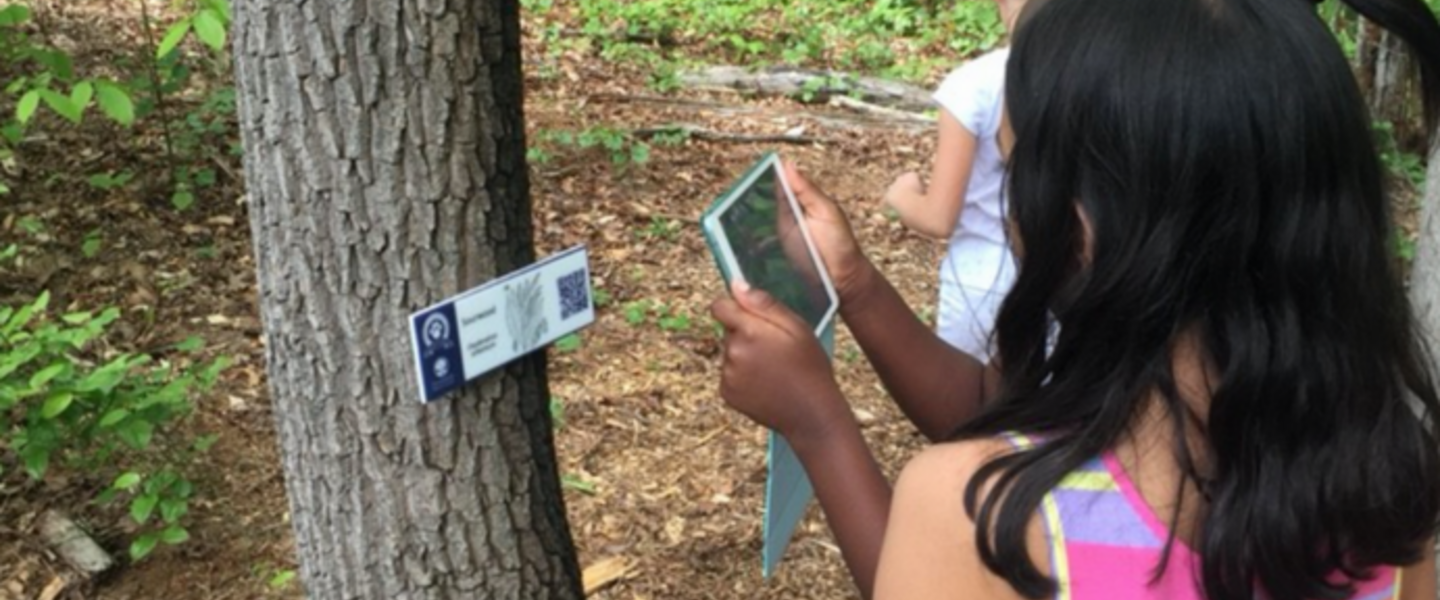
Section Branding
Header Content
Dunwoody Elementary's Road To STEM Certification
Primary Content

Dunwoody Elementary School in DeKalb County is the third elementary school to be Georgia Department of Education STEM Certified. We began our process to become STEM certified in 2011 and became state certified in 2014. Our journey came with ups and downs, trials and errors, and with many learning opportunities for teachers and students alike. We hope that by sharing our story that other schools can learn from our mistakes and find ideas in our successes.
Our first step to earn our STEM certification was to get our teachers on board. Change can be good, but can also be met with resistance. So, our first year was spent providing teacher training, bringing in STEM experts within the county, and dedicating a book study to STEM learning for the faculty. The more informed teachers became about STEM, the better!
However, change doesn’t happen overnight.
Once teachers were on board, we began to implement small STEM challenges. We placed Engineering Design Process posters in every room within our school building, and started with small, manageable STEM builds (marshmallow towers, cardboard challenge). We brought in Buzz from Georgia Tech to drum up excitement and energy towards our new STEM journey.
STEM started to catch on, and the key pieces of our program (curriculum planning and cross-curricular integration) started to form. A team of designated STEM leaders within our school was selected to guide the program and provide support across the school.
The STEM team was challenged to write a mission statement, develop STEM curriculum, find STEM partnerships, create teacher manuals, and find ways to enhance our STEM program.
To us, STEM is more than science, technology, engineering, and math as separate entities. STEM is the seamless integration of those ideals across the curriculum. Although the bells and whistles of STEM (organic gardens, hydroponics, nature trails) are excellent contributions to STEM learning experiences, we have found that they are not the most critical components to STEM. The core content and STEM curriculum is the driving component of our STEM program.
Our STEM curriculum includes monthly engineering design challenges to explicitly teach the Engineering Design Process. These design challenges happen on the last Friday of each month, are aligned to the curriculum in each grade level, and provide an opportunity for students to go through the engineering design process. We learned the importance of vertically aligning STEM challenges after our second year of implementation. Students do not need to be making water filters in second, third, and fourth grade!
Also, to enhance instruction, each grade level has two STEM units. One STEM unit is implemented in the fall and one in the spring. These units look to provide cross-curricular integration, research (data collection), and hands on learning opportunities in an effort to lay a foundation for a larger STEM challenge. These STEM units typically last 4 to 6 weeks.

Technology plays a large role in our students learning. The integration of classroom computers, iPads, a Mac and PC Lab, and smart boards allow for students to learn in a technologically rich environment. We have a strong focus on coding in our Technology Lab, with a teacher to support student learning.
Dunwoody Elementary is STEM certified, but our STEM journey is not complete. Our STEM program continues to grow, change, and evolve as the world around us does the same. Our goal is to provide a place for students to learn and grow, so that when they leave our school they have the foundation they need to continue to learning and to challenge their thinking.
_____________________________________________________
Stacey Mendel is a guest blogger for GPB Education and third grade math and science teacher at Dunwoody Elementary School in Dunwoody, Georgia. She has a B.S. degree in Elementary Education from The University of Alabama and a M.S. degree in Elementary Thematic Mathematics from Georgia State University with endorsements in mathematics and gifted education. Stacey has been teaching for 6 years and serves as a STEM liaison for Dunwoody Elementary School. She has served as a consultant for STEM curriculum development, has led STEM workshops throughout Georgia, and presented at statewide and international STEM conferences.
Dunwoody Elementary School in DeKalb County is the third elementary school to be Georgia Department of Education STEM Certified. We began our process to become STEM certified in 2011 and became state certified in 2014. Our journey came with ups and downs, trials and errors, and with many learning opportunities for teachers and students alike. We hope that by sharing our story that other schools can learn from our mistakes and find ideas in our successes.
Our first step to earn our STEM certification was to get our teachers on board. Change can be good, but can also be met with resistance. So, our first year was spent providing teacher training, bringing in STEM experts within the county, and dedicating a book study to STEM learning for the faculty. The more informed teachers became about STEM, the better!
However, change doesn’t happen overnight.
Once teachers were on board, we began to implement small STEM challenges. We placed Engineering Design Process posters in every room within our school building, and started with small, manageable STEM builds (marshmallow towers, cardboard challenge). We brought in Buzz from Georgia Tech to drum up excitement and energy towards our new STEM journey.
STEM started to catch on, and the key pieces of our program (curriculum planning and cross-curricular integration) started to form. A team of designated STEM leaders within our school was selected to guide the program and provide support across the school.
The STEM team was challenged to write a mission statement, develop STEM curriculum, find STEM partnerships, create teacher manuals, and find ways to enhance our STEM program.
To us, STEM is more than science, technology, engineering, and math as separate entities. STEM is the seamless integration of those ideals across the curriculum. Although the bells and whistles of STEM (organic gardens, hydroponics, nature trails) are excellent contributions to STEM learning experiences, we have found that they are not the most critical components to STEM. The core content and STEM curriculum is the driving component of our STEM program.
Our STEM curriculum includes monthly engineering design challenges to explicitly teach the Engineering Design Process. These design challenges happen on the last Friday of each month, are aligned to the curriculum in each grade level, and provide an opportunity for students to go through the engineering design process. We learned the importance of vertically aligning STEM challenges after our second year of implementation. Students do not need to be making water filters in second, third, and fourth grade!
Also, to enhance instruction, each grade level has two STEM units. One STEM unit is implemented in the fall and one in the spring. These units look to provide cross-curricular integration, research (data collection), and hands on learning opportunities in an effort to lay a foundation for a larger STEM challenge. These STEM units typically last 4 to 6 weeks.

Technology plays a large role in our students learning. The integration of classroom computers, iPads, a Mac and PC Lab, and smart boards allow for students to learn in a technologically rich environment. We have a strong focus on coding in our Technology Lab, with a teacher to support student learning.
Dunwoody Elementary is STEM certified, but our STEM journey is not complete. Our STEM program continues to grow, change, and evolve as the world around us does the same. Our goal is to provide a place for students to learn and grow, so that when they leave our school they have the foundation they need to continue to learning and to challenge their thinking.






